ANIMALS
30 Smartest Animals In The World
Published
11 months agoon

Shutterstock
The animal kingdom abounds with examples of remarkable intelligence, spanning from the depths of the oceans to the skies above. Intelligence in animals manifests diversely, encompassing problem-solving abilities, social complexity, communication skills, and tool usage. This broad spectrum of cognitive abilities highlights the evolutionary advantages conferred by intelligence across various habitats and lifestyles. By delving into the 30 smartest animals, we unearth a realm where creatures not only survive but thrive through their resourcefulness, innovation, and cooperative behaviors. These animals challenge our conceptions of intelligence, expanding the boundaries of what is achievable in the natural world and offering profound insights into the workings of their minds.
Bottlenose Dolphins

Wikipedia
Bottlenose dolphins are celebrated for their intelligence, exemplified through intricate social behaviors and tool usage. They employ cooperative hunting tactics and foster elaborate social connections, essential for their well-being. Remarkably, dolphins have been observed using objects like sponges to shield their snouts while foraging on the seafloor, showcasing their resourcefulness. Their aptitude for vocal mimicry and comprehension of symbolic language hint at a cognitive sophistication comparable to that of great apes. Through these abilities, bottlenose dolphins illuminate the depth of intelligence present within the animal kingdom.
Elephants
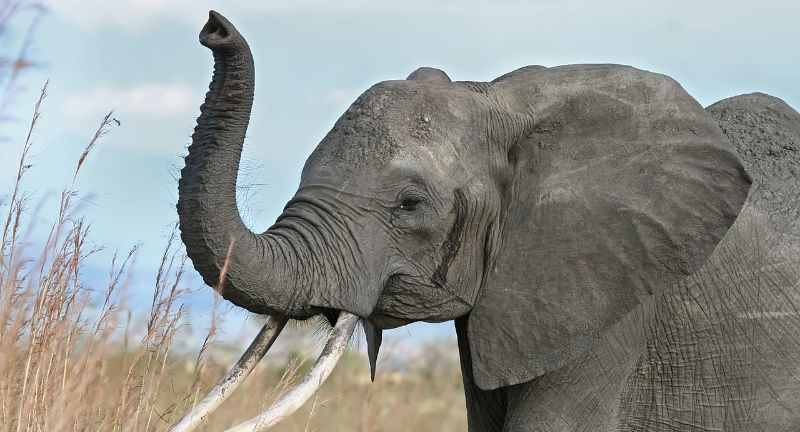
Wikipedia
Elephants stand out for their remarkable memory and intelligence, displaying a range of sophisticated behaviors including empathy, mourning, and self-awareness. Their adept use of tools, such as employing sticks to scratch themselves or leaves to swat flies, reflects a practical understanding of their surroundings. Additionally, elephants exhibit complex social structures and communication systems, utilizing vocalizations and physical gestures to convey information. Their exceptional cognitive abilities are underscored by their adeptness at problem-solving and cooperation in group activities, highlighting the depth of intelligence within these majestic creatures.
Bonobos
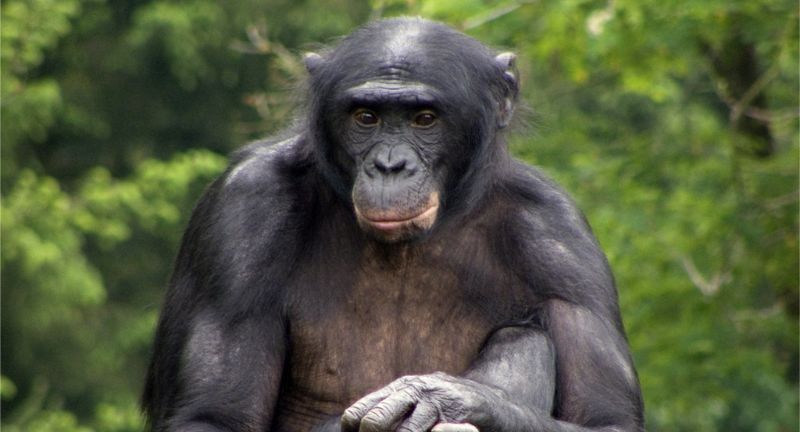
Wikipedia
Bonobos, closely related to chimpanzees, showcase a remarkable level of intelligence and emotional depth. They live in peaceful, matriarchal societies where conflicts are often resolved through sexual behavior, fostering social cohesion. Bonobos exhibit tool use and symbol-based communication, indicating cognitive abilities akin to those of other great apes. Their complex social structures and behaviors offer valuable insights into the evolution of cooperation and empathy among primates.
Octopuses

Wikipedia
Octopuses display an extraordinary level of intelligence, showcasing behaviors such as problem-solving, escaping from enclosures, and tool usage. Their remarkable capability to change color and texture for camouflage or communication highlights a nuanced understanding of their environment. Observations of octopuses utilizing coconut shells and other objects as protective shelters suggest a level of foresight and environmental manipulation. Despite being solitary creatures with a relatively short lifespan, their cognitive accomplishments are particularly remarkable, considering the limited time available for learning and development.
African Grey Parrots

Wikipedia
African Grey Parrots are renowned for their exceptional intelligence, characterized by advanced vocal mimicry and cognitive prowess. They possess the remarkable ability to acquire an extensive vocabulary and utilize words in context, indicating a nuanced understanding of meaning. These parrots showcase problem-solving skills by successfully tackling complex puzzles that demand an understanding of cause and effect. Moreover, research has revealed their capacity to comprehend concepts such as numbers, colors, and shapes, solidifying their status as one of the most intelligent bird species known.
Squirrels

Wikipedia
Squirrels showcase remarkable abilities in navigating their environments, particularly demonstrated through their impressive spatial memory, notably in the context of caching and retrieving food. They exhibit strategic behavior, employing deceptive tactics to safeguard their caches from potential thieves. Their memory complexity is highlighted by their ability to recall the locations of thousands of food stores. Additionally, squirrels display noteworthy problem-solving skills, adeptly overcoming obstacles to access food, thus showcasing their adaptability and ingenuity.
Ravens

Wikipedia
Ravens are celebrated for their remarkable problem-solving abilities and adept use of tools, such as bending wires to obtain food—a testament to their intelligence. Their cognitive prowess is further evidenced by their intricate social behaviors and ability to thrive in diverse environments. Ravens exhibit an exceptional capacity to recognize individual human faces, recalling those who have shown them kindness or hostility. Moreover, studies have revealed their ability to plan for future needs, a cognitive skill previously believed to be exclusive to humans and great apes, underscoring the depth of their intelligence.
Orangutans

Wikipedia
Orangutans are esteemed for their remarkable intelligence among primates, showcasing tool usage in the wild, like employing sticks to extract insects or seeds. They display foresight in their planning abilities, often strategizing their travel routes in advance. Additionally, orangutans exhibit adeptness at learning new tasks through observation, even mastering complex technical tasks in captive settings. Their capacity for social learning and problem-solving underscores the cognitive sophistication of this endangered species.
Pigs

Wikipedia
Pigs rank among the most intelligent domestic animals, exhibiting levels of intelligence and emotional depth akin to dogs and primates. They possess remarkable long-term memories and demonstrate an aptitude for comprehending complex social and environmental contexts. Pigs showcase their intelligence by learning tricks, navigating mazes, and solving problems that demand abstract thinking and planning. Moreover, their social behaviors, curiosity, and ability to learn through observation underscore their cognitive prowess and adaptability.
Dogs

Wikipedia
Dogs are renowned for their loyalty and intelligence, displaying an impressive capacity to learn a diverse array of commands and comprehend human emotions. They excel in communicating with humans through vocalizations, body language, and facial expressions. Due to their intelligence, dogs have been successfully trained for various roles, including service animals, search and rescue teams, and law enforcement. Furthermore, their adeptness at forming intricate social bonds with both humans and other animals serves as a testament to their emotional intelligence and cognitive capabilities.
Alexandrine Parakeet

Wikipedia
The Alexandrine Parakeet is celebrated for its intelligence and remarkable capacity to mimic human speech with clarity. This bird species showcases impressive problem-solving skills and can readily learn a diverse range of tricks and tasks. Their social nature enables them to engage with humans and fellow birds in intricate ways, underscoring their advanced cognitive abilities. The playful demeanor and adeptness at vocal mimicry exhibited by the Alexandrine Parakeet render it a captivating subject for research into avian intelligence.
Rats

Wikipedia
Rats are recognized for their high intelligence and adaptability, evident in their adeptness at navigating mazes and solving intricate problems. They display social behaviors and can be trained to execute tasks, underscoring their learning aptitude. In experiments, rats have exhibited empathy, exemplified by their efforts to free trapped companions, indicating a nuanced level of emotional comprehension. Their cognitive prowess extends to tool usage and their capacity to adjust to new environments, rendering them subjects of keen interest in scientific inquiry.
Kea Parrots

Wikipedia
Kea Parrots, indigenous to New Zealand, are celebrated for their intelligence and inquisitiveness. They exhibit proficiency in solving intricate puzzles and manipulating objects within their surroundings. Remarkably, they display a playful demeanor that encompasses tool usage, a behavior seldom observed among avian species. Keas showcase their social intelligence by collaborating to attain objectives, thereby underscoring their adeptness at problem-solving and cooperative endeavors.
Pigeons
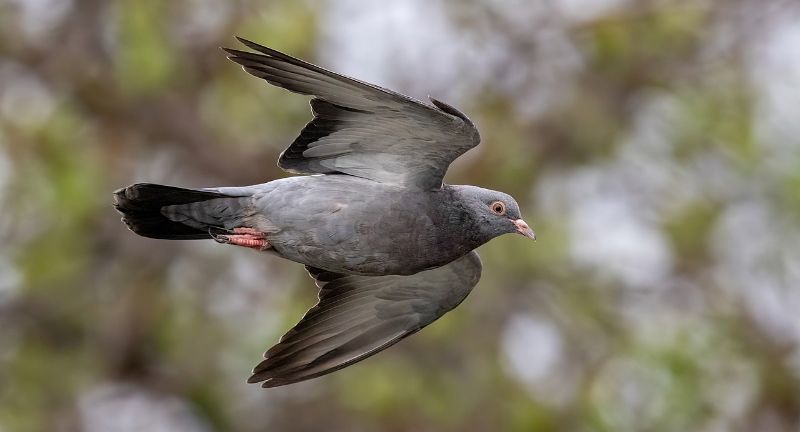
Wikipedia
Pigeons exhibit remarkable cognitive prowess, showcased by their ability to recognize themselves in mirrors, discern between photographs, and comprehend concepts of time and space. They serve as valuable subjects in experiments exploring learning, memory, and decision-making. Pigeons display adeptness in mastering complex tasks, such as categorizing objects and navigating considerable distances to return to their nests. Their capacity to grasp abstract mathematical principles and solve problems positions them as among the most intelligent avian species.
Gorillas

Wikipedia
Gorillas, among the largest primates, exhibit notable intelligence through their tool usage and communication abilities, including sign language. They form intricate social structures and display profound emotional expressions, such as mourning for deceased group members. Gorillas have shown aptitude in learning and retaining tasks, indicating a high level of cognitive sophistication. Their gentle demeanor and empathetic behavior offer valuable insights into primate emotions, challenging misconceptions about their nature.
Sea Lions

Wikipedia
Sea Lions have exhibited a remarkable aptitude for comprehending simple syntax and commands in studies of artificial language, revealing their cognitive prowess. They display problem-solving skills indicative of a sophisticated intelligence. Capable of learning and retaining commands, sea lions can be trained to execute a diverse array of tasks. Their playful demeanor and social interactions underscore their capacity to interact meaningfully with their surroundings and fellow beings.
Bees

Wikipedia
Bees display intricate communication through the “waggle dance,” a method utilized to communicate food source locations within the hive, showcasing their advanced spatial awareness and social collaboration. Their adept problem-solving abilities include optimizing routes between flowers for efficiency. Bees exhibit collective decision-making and adaptability to environmental changes, highlighting the sophistication of their intelligence.
Ants

Wikipedia
Ants exhibit highly organized colonies and intricate social structures, with diverse roles from workers to queens. They engage in farming practices, cultivating fungi and herding aphids for honeydew, indicating an understanding of agriculture. Ants employ collective problem-solving techniques to overcome obstacles and locate optimal paths to food sources. Their coordinated efforts demonstrate remarkable social intelligence and collective cognition.
Chimpanzees

Wikipedia
Chimpanzees, our closest living relatives, exhibit remarkable intelligence akin to humans in many aspects. They showcase a sophisticated understanding of their environment by utilizing tools for hunting and gathering food, evidencing their adept problem-solving skills. Moreover, chimpanzees have demonstrated the ability to learn sign language, enabling them to convey complex ideas and emotions, highlighting their linguistic prowess. Their social structures are intricate, characterized by alliances and empathy, underscoring their advanced cognitive and emotional capacities. Through these traits, chimpanzees offer profound insights into the complexities of intelligence and social behavior in the animal kingdom.
Horses

Wikipedia
Horses exhibit the ability to discern human emotions and expressions, reflecting a sophisticated level of social intelligence. They possess strong memory and problem-solving skills, enabling them to navigate intricate environments and comprehend human cues. Horses develop deep emotional connections with both humans and fellow equines, showcasing their emotional depth and sensitivity. Their aptitude for learning and adaptability makes them indispensable partners in a wide range of human endeavors, from agricultural work to therapeutic interventions.
Parrotfish

Wikipedia
Parrotfish contribute significantly to the well-being of coral reefs by consuming algae, thus preventing it from overgrowing and suffocating the coral. Their behaviors, such as the creation of protective mucus cocoons at night, demonstrate an awareness of predation risks and the importance of self-preservation. These actions underscore the intelligence and adaptability of parrotfish within their ecosystems, showcasing their role as key players in maintaining reef health and biodiversity.
Meerkats

Wikipedia
Meerkats exhibit sophisticated social behaviors and community structures within their groups, showcasing their advanced social intelligence. They fulfill various roles within their clans, demonstrating an understanding of teamwork and social responsibility. Through a range of vocalizations, they effectively communicate with each other, coordinating activities like foraging and predator detection. The cooperative and problem-solving abilities of meerkats highlight the adaptive advantages of collective cognition and social living in the animal kingdom.
Raccoons

Wikipedia
Raccoons are celebrated for their adept problem-solving abilities, notably in urban settings where they adeptly maneuver through intricate obstacles to secure food sources. Their nimble hands enable them to manipulate containers and unlock latches, showcasing their comprehension of human-designed objects. Thriving in close quarters with humans, raccoons exhibit remarkable aptitude for learning and adjusting to new environments. Their innate curiosity and intelligence render them among the most adaptable and resourceful urban wildlife species.
Portia Labiata

Wikipedia
Portia Labiata, a jumping spider species, showcases remarkable problem-solving skills and strategic planning in its hunting techniques. Unlike typical spiders that depend on webs, Portia employs visual acuity and cunning tactics to stalk or entice its prey. This spider displays sophisticated behaviors like trial-and-error learning and adjusts its hunting strategies based on past encounters. The cognitive prowess of Portia Labiata challenges conventional notions of intelligence in invertebrates, suggesting that complex cognitive processes are not exclusive to animals with larger brains.
Macaques

Wikipedia
Macaques are renowned for their intricate social structures and behaviors, reflecting their highly social nature. In the wild, they exhibit remarkable tool usage, employing stones to crack open nuts, showcasing their problem-solving skills and adaptability. Macaques also display a capacity for social learning, readily acquiring new behaviors through observation within their social groups. Their sophisticated communication skills and complex social hierarchies further highlight their intelligence, positioning them as invaluable subjects for studying primate cognition and behavior.
Lyrebirds

Wikipedia
Lyrebirds are renowned for their remarkable ability to mimic a wide range of sounds from their environment, both natural and artificial. This skill showcases their exceptional auditory memory and sophisticated auditory processing capabilities. They utilize their mimicry for various purposes, including communication and mating displays, indicating an understanding of the social significance of sounds within their ecosystem. The complexity of their vocal mimicry, which extends to imitating human-made noises like chainsaws and camera shutters, underscores their cognitive flexibility and adaptability to diverse auditory stimuli.
New Caledonian Crows

Wikipedia
New Caledonian Crows are extraordinary for their advanced tool-making skills, including crafting hooks from twigs to extract insects from narrow spaces. Their ability to plan ahead and solve problems is demonstrated by their intricate use of tools, comparable to that of primates. These crows have been seen carrying tools for later use, suggesting an understanding of future requirements. Their intelligence highlights the advantages of cognitive abilities in coping with environmental demands.
Hyenas

Wikipedia
Hyenas exhibit complex social dynamics and impressive problem-solving skills. They communicate through a diverse range of vocalizations, postures, and signals, conveying intricate information within their groups. In hunting and territorial defense, hyenas demonstrate remarkable cooperation and strategic planning, rivaling the intelligence observed in some primates. Their cognitive abilities challenge the misconception of hyenas as solely scavengers, highlighting their adaptability and sophisticated behaviors in the wild.
Sperm Whales

Wikipedia
Sperm Whales possess the largest brain of any known creature on Earth, indicating advanced cognitive abilities. They engage in complex social interactions and communicate using codas, a series of clicks unique to their pods. These deep-sea mammals exhibit cultural learning, as evidenced by regional vocal patterns passed down through generations. Their adept navigation and communication in the ocean depths reflect a profound understanding of their environment and social dynamics.
Cuttlefish

Wikipedia
Cuttlefish, as cephalopods, are renowned for their intelligence, showcased through problem-solving and observational learning abilities. Their sophisticated camouflage system enables them to change color and texture for both camouflage and communication purposes. In laboratory settings, cuttlefish have exhibited cognitive prowess by navigating mazes and solving object manipulation puzzles. Their intricate behavior and learning capacities make them intriguing subjects for investigating invertebrate intelligence.
Conclusion

Shutterstock
As we explore the cognitive abilities of these extraordinary animals, we’re struck by the diversity of intelligence beyond our own human experience. From the problem-solving skills of octopuses in the depths of the ocean to the clever tool use of crows in urban environments, each species demonstrates intelligence adapted to its unique habitat and challenges. These examples of animal intelligence not only captivate us but also prompt us to reconsider our relationship with the natural world. By recognizing and valuing the diverse forms of intelligence around us, we can gain a deeper respect for the intricate web of life on Earth and our place within it.
More Amazing Animals+
-
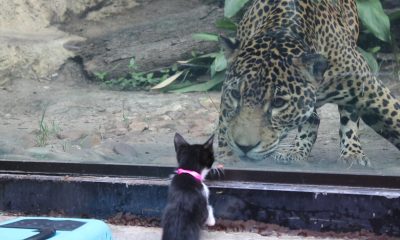

The Animal Defense League took a trip to the San…
-
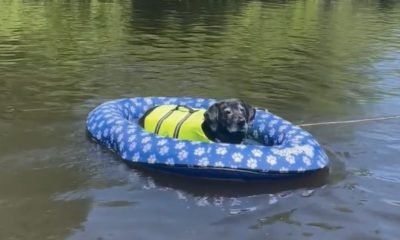

Lazy pooch gets paddle board tow
-


Elephant Mother And Daughter Get New Home With Room To…
-


28 Most Colorful Critters From Around The World
-


Bison bull caught scratching away the last bit of his…
-


The most beautiful thing you will watch today. Great #Hornbill…
-
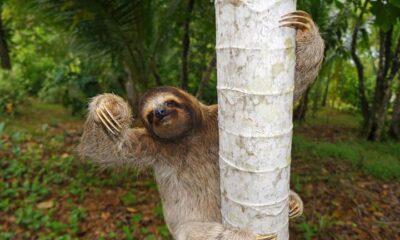

27 Odd Animals That We Actually Think Are Really Cute
-
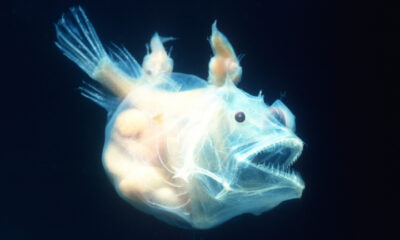

27 Weird Animal Facts That You Didn’t Know
-


Roaming Mountain Lion Rescued From a Classroom in California
-
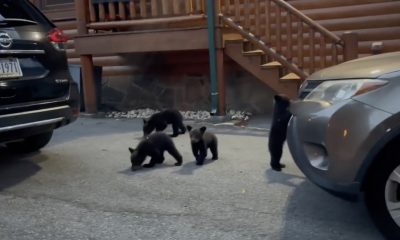

Four bear cubs play while mama searches for them
-
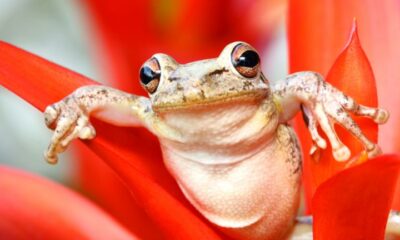

30 Most Interesting Mutualistic Relationships In Nature
-
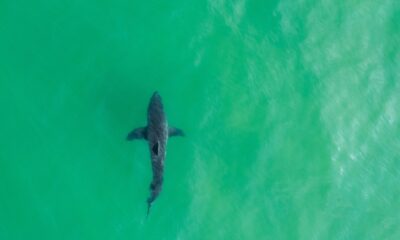

25 Reasons Sharks Are Something To Be Worried About
